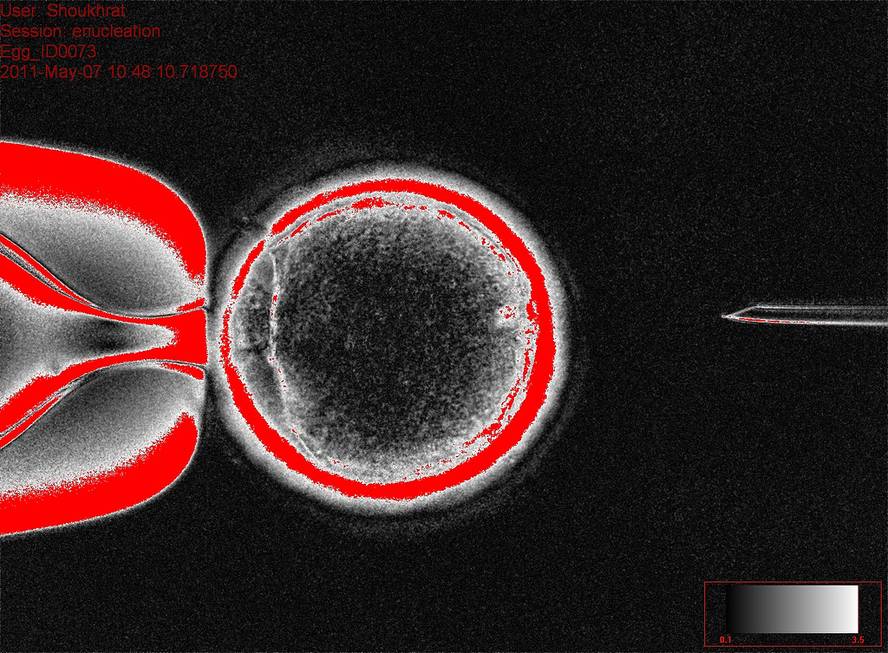The cloning of embryonic human cells reopens the abandoned path
Human Embryonic Stem Cells Derived by Somatic Cell Nuclear Transfer is the title of the prestigious article published by the specialized journal Cell. As the title says, the article explains the methodology for obtaining embryonic human cells and, in addition, anticipates that it opens a hopeful way to treat today incurable diseases: parkinson, multiple sclerosis, spinal injuries...
The research, led by researchers from the Oregon University of Health and Science and the Primates Research Center, is, according to them, “revolutionary.” In the press release of the University, research chief Shoukhrat Mitalipov confirms the success of the technique: “The rigorous study of stem cells derived from this technique has shown that [the cells obtained by us] have the same capacity as conventional embryonic cells to become another type of cell, such as nerve cells and liver and cardiac cells.”
In addition, it indicates that these stem cells have no risk of rejection, since they “contain genetic material of the patient”. However, he has recognized that “they still have a lot to do” to develop safe and effective stem cell treatments. The
same press release has made available a large number of materials, including the video summary of the technique used:
Stem Cell Breakthrough Summarized by OHSU's Dr. Shoukhrat Mitalipov from OHSU Video on Vimeo.
Unexpected achievement
The achievement has surprised many scientists. In fact, most had abandoned this path, because so far it had only failed. In addition, news about this technique was often received with a point of suspicion, because the fraud of researcher Woo Suk Hwang has not yet been forgotten and because ethical problems are resurrected, since the possibility of cloning the man would be closer.
So, many labs are trying to reprogram mature cells to get them another type of cells. They are neither rejections nor generate ethical problems. Precisely last year, researchers demonstrated that the Nobel Prize in Medicine was able to turn adult cells into pluripotent. However, they have not yet managed to fine-tune the technique.
So the news has caught many scientists in that effort. In any case, the work done by Oregon has been praised by both (including the Nobel Laureates).
The research itself is clear. Classical nucleus transfer technique has been used to obtain embryonic stem cells, but to overcome the obstacles they had so far, small changes have been made in the methodology. For example, researchers have used inactivated Sendai viruses to bind the egg to adult cell material, an electrical discharge to cause embryo development and caffeine to prevent premature egg activation.
None of these steps is new, but researchers have successfully combined them. Researchers have stated that they now want to compare their own with stem cells obtained with mature cell reprogramming and that the results are “exciting”.
Efficiency, key
Specifically, for alternative cell therapy, Gurutz Linazasoro, president and researcher at Inbiomed, recalled that there are now four ways to obtain cells: “On the one hand there are mature stem cells, which are easily obtained, but which have a very limited capacity to give other types of cells. On the other hand, the stem cells of the remaining embryos of in vitro fertilization; with the genetic material of the embryo.”
“In addition to these, as Linazasoro explains, we have reprogrammed cells, similar to the embryonic ones, but with genetic information of the patient. The problem is that they also have four transcription factors that risk producing tumors and other problems. And finally, we have the stem cells that they have achieved now. They have the ability to give different cell types to embryonic cells, but although they do not have transcription factors, they are at risk of producing tumors.”
Linazasoro believes that “efficiency will be the key” to predict what will be the most likely to have to advance these four paths. “For example, obtaining stem cells from in vitro fertilization embryos is easy, but not so easy to transfer to the type of cell you want. And surely the same will happen with the embryonic ones that have now achieved by cloning. Reprogrammed cells are better in this sense, as they have some facility to become the same type of cells as the original adult cell.”
Regardless of efficacy, cloned stem cells have the drawback of the need for eggs. “This opens again the question of egg donors, whether or not to pay, etc. And if we go further, there is also the issue of hybridization, that is, the possibility of using eggs of other species. This generates ethical doubts.”
In any case, Linazasoro has described the achievement of Oregon as an important step forward in generating new opportunities. However, for other applications, such as generating disease study models or testing medicines, rescheduling is considered better. “We currently work with them and they are standardized. They are giving very good results,” said Linazasoro, and highlighted the success they have in the pharmaceutical industry because “they allow shortening the research deadlines for medicines.”






